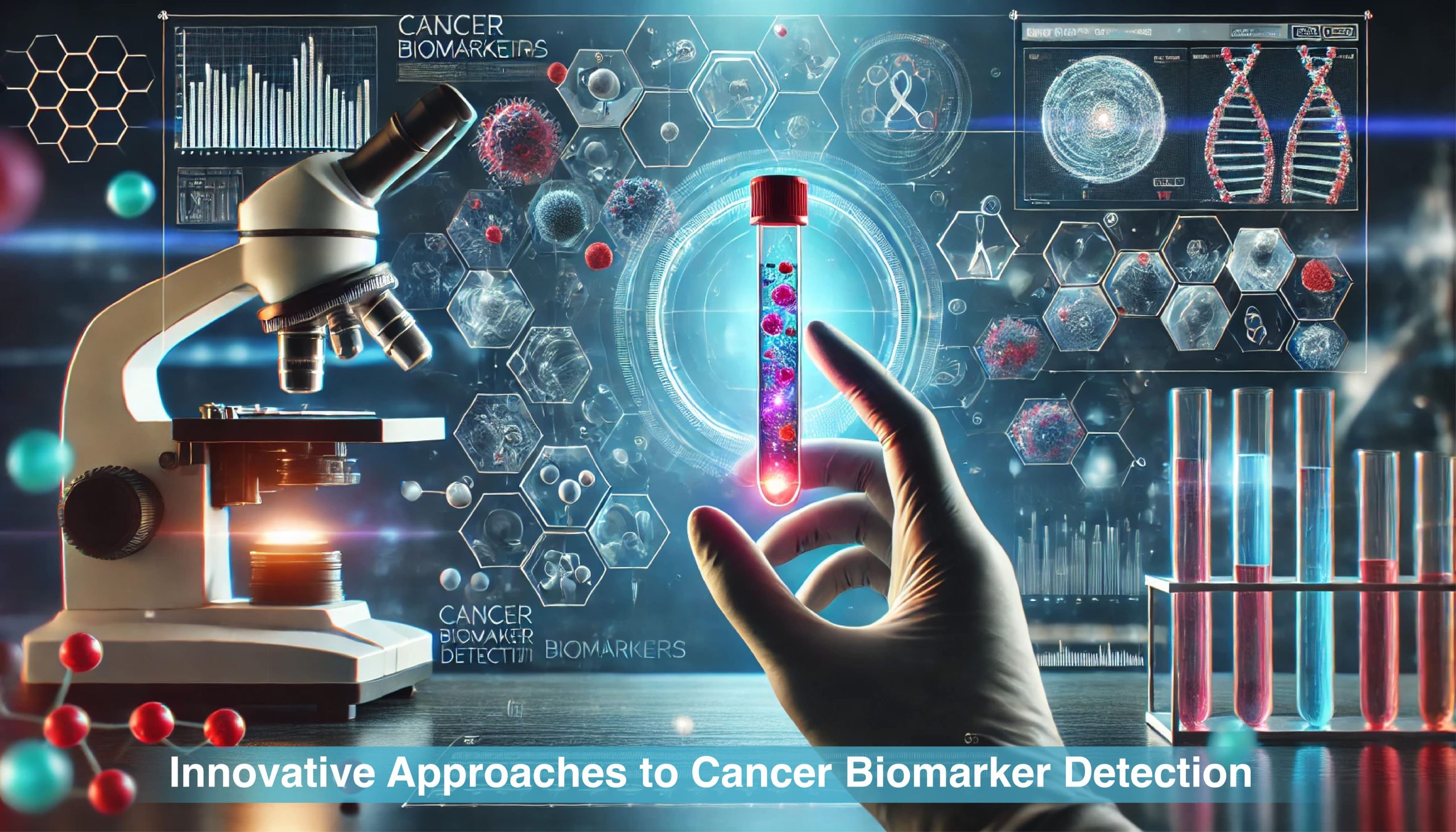Metal-Enhanced Fluorescence for Cancer Biomarker Detection
The general incorporation of biosensing systems with smartphones has been a major advancement in the production of portable and easy-to-use diagnostic devices. Mobile phones, especially the smart ones, are perfect tools for data collection, analysis, and sharing and are therefore suitable for point-of-care testing. The advancements of the last few years have brought in smartphone-associated systems for the identification of cancer biomarkers using microfluidic tools, along with nucleic acid amplification tests.
An example of this is a portable cell for the LAMP multiplex analysis of the presence of disease-associated nucleic acid sequences equipped with microfluidics and a smartphone reader. This offers the potential to identify several cancer biomarkers at once, thus allowing the creation of a quick and inexpensive diagnostic tool that can be implemented in a non-hospital environment. Smartphone-integrated diagnostic tools are portable and simple to use; they might significantly increase the accessibility of cancer diagnostics, especially in LMICs.
Aptamers and Their Role in Biomarker Detection
Another technique that has been considered for cancer biomarker detection is called metal-enhanced fluorescence (MEF). MEF incorporates the application of metallic nanostructures for amplification of the fluorescence signal from the fluorophores, thereby increasing the limit of sensitivity. All optically, some biosensors employ silver-enhanced fluorescence polarization (BioSEF) for the rapid detection of protein biomarkers such as lactoferrin, which has a relationship with cancer.
Due to their high selectivity, conventional and modified aptamers can target various kinds of biomarkers, such as nucleic acids, proteins, and exosomes. Non-antibody-binding molecules, such as aptamers, have some advantages over conventional molecular recognition elements, like antibodies; they are cheaper, synthesizable, and amendable for optimization. Continuous advancement in aptamer-based bio sensitization is expected to result in new diagnostic tests with increased specificity for identifying cancer biomarkers.
Conclusion
It is seen that the possibilities for the early and accurate detection of cancer biomarkers have expanded, and new methods appear constantly. None of these has limited scientists and engineers from envisioning and developing superior tools like nanotechnology, fluorescence-based biosensing, quantum dots, smartphone-integrated tools, metal-enhanced fluorescence, and aptamers, among others. Such developments have the possibility of altering the diagnostic techniques for cancer and making them more efficient, painless, and accurate. Therefore, as future research comes through, these innovative approaches will be intensified and adopted in clinical practice, thereby enhancing the global outcome of cancer patients.
References
1. Zhang, Z., Tang, C., Zhao, L., Xu, L., Zhou, W., Dong, Z., Yang, Y., Xie, Q. and Fang, X., 2019. Aptamer-based fluorescence polarization assay for separation-free exosome quantification. Nanoscale, 11(20), pp.10106-10113.
2. Rupsa Datta, Tiffany M. Heaster, Joe T. Sharick, Amani A. Gillette, and Melissa C. Skala. Fluorescence lifetime imaging microscopy: fundamentals and advances in instrumentation, analysis, and applications. Journal of Biomedical Optics 25(7), 071203 (13 May 2020).
3. Ma, F., Li, C.C. and Zhang, C.Y., 2018. Development of quantum dot-based biosensors: principles and applications. Journal of Materials Chemistry B, 6(39), pp.6173-6190.
4. Chen W, Yu H, Sun F, Ornob A, Brisbin R, Ganguli A, Vemuri V, Strzebonski P, Cui G, Allen KJ, Desai SA, Lin W, Nash DM, Hirschberg DL, Brooks I, Bashir R, Cunningham BT. Mobile Platform for Multiplexed Detection and Differentiation of Disease-Specific Nucleic Acid Sequences, Using Microfluidic Loop-Mediated Isothermal Amplification and Smartphone Detection. Anal Chem. 2017 Nov 7;89(21):11219-11226. doi: 10.1021/acs.analchem.7b02478. Epub 2017 Sep 5. PMID: 28819973.
5. Chen Z, Li H, Jia W, Liu X, Li Z, Wen F, Zheng N, Jiang J, Xu D. Bivalent Aptasensor Based on Silver-Enhanced Fluorescence Polarization for Rapid Detection of Lactoferrin in Milk. Anal Chem. 2017 Jun 6;89(11):5900-5908. doi: 10.1021/acs.analchem.7b00261. Epub 2017 May 12. PMID: 28467701.
6. Gil HM, Price TW, Chelani K, Bouillard JG, Calaminus SDJ, Stasiuk GJ. NIR-quantum dots in biomedical imaging and their future. iScience. 2021 Feb 15;24(3):102189. doi: 10.1016/j.isci.2021.102189. PMID: 33718839; PMCID: PMC7921844.
7. Klębowski B, Depciuch J, Parlińska-Wojtan M, Baran J. Applications of Noble Metal-Based Nanoparticles in Medicine. Int J Mol Sci. 2018 Dec 13;19(12):4031. doi: 10.3390/ijms19124031. PMID: 30551592; PMCID: PMC6320918.
8. Li, X., Ding, X., Li, Y., Wang, L. and Fan, J., 2016. A TiS 2 nanosheet enhanced fluorescence polarization biosensor for ultra-sensitive detection of biomolecules. Nanoscale, 8(18), pp.9852-9860.
